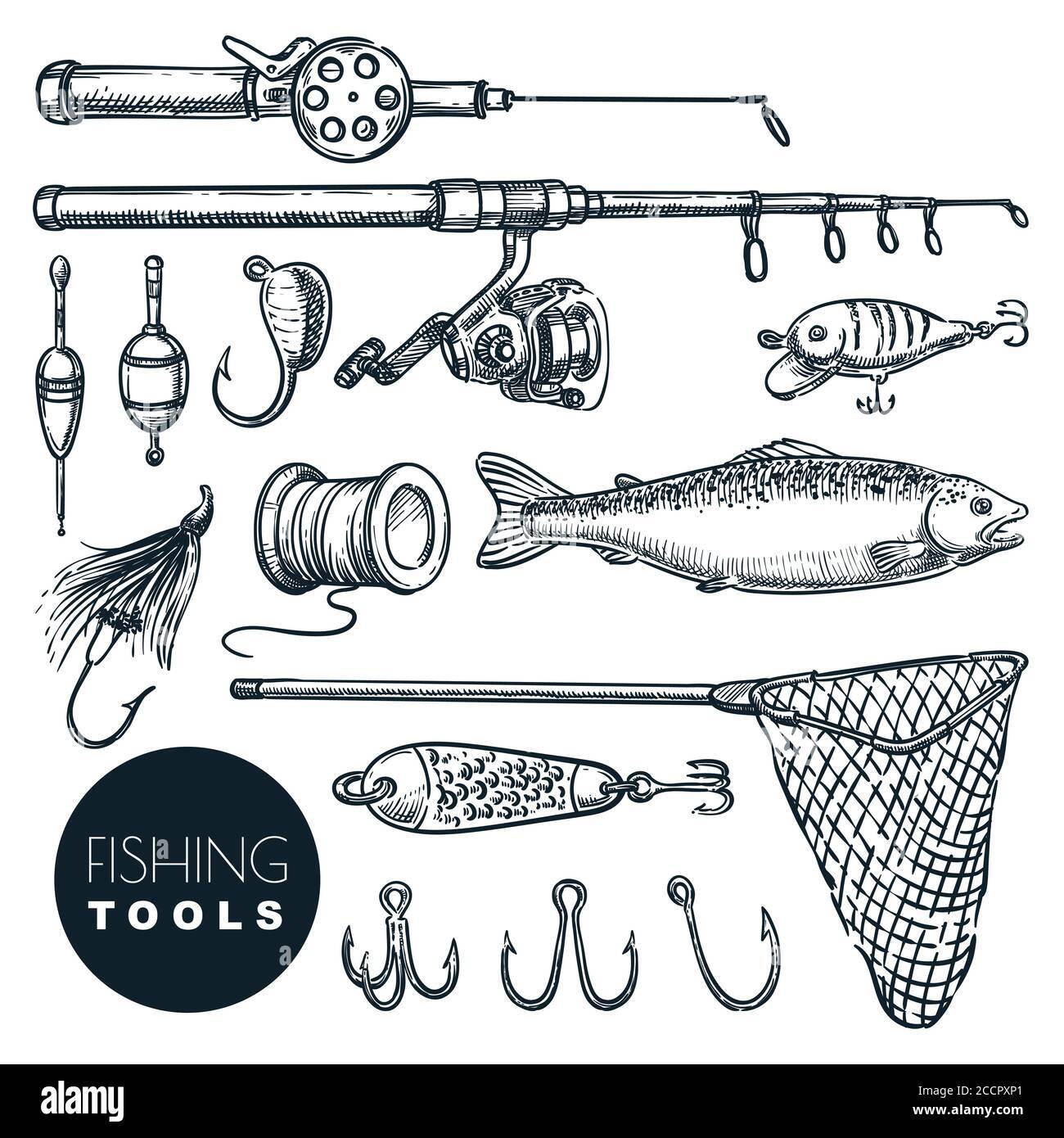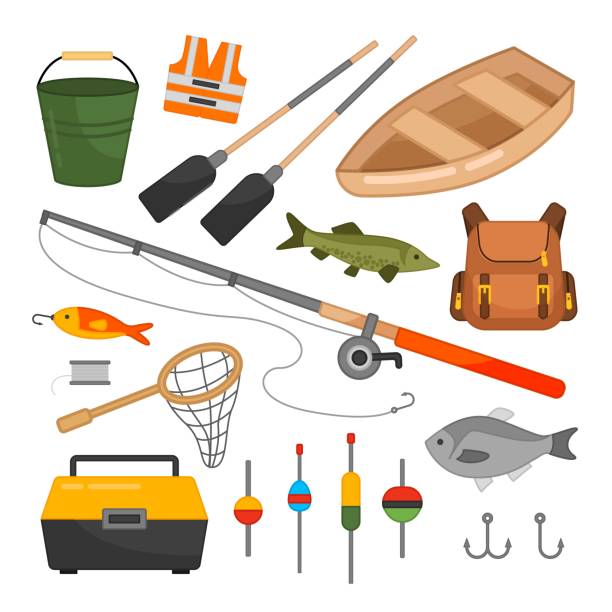The Complete Guide to Fishing Fishing: Baits, Tackle, and Fly Fishing Basics for All Ability Degrees
The Total Guide to Fishing Fishing supplies an extensive appearance at important gear for fishermens at any kind of level. It covers various lures, deal with components, and fly fishing fundamentals. Understanding these aspects is crucial for an effective angling experience. The overview also emphasizes the value of seasonal approaches and proper gear maintenance. As anglers navigate their alternatives, they might question which certain items will really boost their fishing experiences.
Recognizing Various Sorts Of Fishing Lures
A variety of fishing baits exist, each developed to draw in certain sorts of fish. All-natural lures, such as pests, minnows, and worms, resemble the fish's all-natural diet regimen, making them reliable for several varieties. For instance, nightcrawlers are preferred for freshwater angling, while minnows reel in bigger fish like bass and pike.
Synthetic baits, including appeals and jigs, are crafted to copy the activity and look of victim. These can range from brilliantly tinted plastic worms to sensible crankbaits created to imitate swimming fish.
One more category is scent-based lures, which make use of smells to draw in fish from a distance. These baits are particularly valuable in dirty waters.
Eventually, the choice of lure relies on the target species, water problems, and angling technique, making it necessary for anglers to understand their alternatives and choose the most effective lure for their details angling scenario.
Essential Fishing Tackle: Poles, Reels, and Lines
While choosing the right angling deal with, understanding the interaction in between rods, reels, and lines is essential for successful fishing. Fishing poles come in numerous lengths and activities, each created for particular angling methods and species. A much shorter rod gives much better control for close-in angling, while longer rods permit higher spreading distance.
Reels, readily available in spinning, baitcasting, and fly alternatives, should match the pole and line kind to guarantee smooth operation. The selection of reel considerably impacts the fishermen's ability to fetch catches efficiently.
Lines, classified by material and toughness, function as the link between the pole and the fish. Monofilament, fluorocarbon, and braided lines each deal one-of-a-kind benefits, influencing visibility and level of sensitivity. Picking the suitable mix of pole, reel, and line is essential, as it directly affects spreading performance, sensitivity to attacks, and total angling success. Each component needs to work sympathetically to enhance the angling experience.
Selecting the Right Fishing Lures for Your Target Species
Selecting the appropriate fishing lures calls for a keen understanding of the preferences of target types - Xplorer Fly Fishing. Variables such as water problems and local forage play a considerable function in establishing which lures will be most efficient. By lining up appeal option with these variables, anglers can enhance their opportunities of success on the water
Understanding Species Preferences
Choosing the best fishing draws calls for an understanding of the details preferences of target types, as different fish are drawn in to varying motions, sizes, and colors. Bass are usually attracted to brilliant, fancy lures that simulate their natural prey, while trout may favor extra refined, natural colors. Furthermore, the dimension of the lure need to match the dimension of the fish being targeted; bigger types usually respond better to larger appeals. Activity also plays an important role; some fish are attracted to appeals that simulate irregular behavior, while others prefer a constant, smooth get. By identifying these choices, anglers can properly raise their opportunities of an effective catch, customizing their deal with to the unique features of each types.
Matching Lures to Conditions
The performance of fishing appeals typically rests on the prevailing ecological conditions. Fishermens should take into consideration factors such as water temperature level, clearness, and current when picking the suitable appeal. In dirty waters, intense or loud lures have a tendency to bring in attention, while in clear conditions, even more subtle motions and all-natural shades are reliable. Seasonal changes also play a critical role; during generating durations, fish might respond better to lures simulating their target. In addition, time of day affects fish activity; dawn and sundown are prime times for utilizing topwater appeals. Eventually, understanding these conditions allows anglers to match their lures to the target types, boosting their chances of a successful catch. Understanding of environmental dynamics is crucial to efficient appeal choice.
The Basics of Fly Fishing Gear
A solid understanding of fly fishing gear is necessary for both newbies and experienced anglers alike. The basic parts of fly angling equipment include the fishing pole, reel, line, and flies. The fly rod, usually longer and a lot more versatile than standard fishing pole, permits specific casting. Selecting the appropriate pole depends upon the fishing environment and target types.
The reel, made to hold the fly line, plays a considerable function in handling line retrieval and drag. Fly lines are specialized for various strategies, from drifting to sinking, and need to be matched to the pole's requirements.
Flies copy marine bugs and lure fish, and come in different styles such as completely dry flies, nymphs, and banners. Choosing the suitable fly is vital, as it needs to correspond to the neighborhood fish types and problems. Mastery of these basic parts use this link creates the structure for successful fly angling experiences.
Tips for Organizing Your Fishing Tackle Box
Organizing a fishing take on box can considerably improve a fishermen's effectiveness on the water. By sorting tackle by kind, utilizing containers successfully, and labeling every little thing clearly, anglers can Get the facts quickly access their equipment. These techniques not only conserve time however likewise assure that necessary things are constantly at hand when required.
,aspect=fit)
Kind by Type
Sorting take on by kind warranties that fishermens can swiftly locate the gear they need when the ideal angling possibility arises. Organizing items such as hooks, lures, and sinkers into designated sections enhances efficiency and minimizes frustration during outings. Categorizing lures by kind-- online, synthetic, or frozen-- allows for swift choices based on angling problems. Tackle boxes can be split into compartments for simple access to certain gear, such as fly fishing essentials or saltwater equipment. This method not only conserves time however likewise aids in keeping the problem of the deal with, making sure whatever stays in optimal shape. By applying this arranged method, anglers can focus more on the angling experience instead than browsing for misplaced items.

Usage Containers Wisely
Making use of containers successfully can significantly boost the organization of an angling tackle box. Fishermens need to contemplate utilizing a selection of containers, such as little take on trays, zip-lock bags, and compartmentalized boxes, to separate different kinds of gear. This approach not only saves time when looking for specific products however also stops tangling and damages. For example, weights, hooks, and appeals can each have assigned containers, facilitating easy access during fishing expedition. In addition, clear containers enable quick exposure of contents, improving the selection process. It is additionally helpful to ponder the shapes and size of containers to make the most of area within the deal with box. By carrying out these organizational strategies, fishermens can keep a much more pleasurable and reliable angling experience.
Tag Every Little Thing Plainly
Clear labeling is vital you can look here for maintaining an organized fishing tackle box. By plainly marking containers and compartments, anglers can conveniently situate particular items, saving time and reducing frustration throughout fishing expedition. Making use of water resistant labels warranties longevity in different weather. It is advisable to classify products such as hooks, attractions, and line types, providing fast accessibility when needed. In addition, color-coded labels can enhance exposure and company. Routinely updating tags as materials change aids preserve a reliable system. When fishing with others, clear labeling is especially beneficial, permitting easy sharing and understanding of deal with setups. Eventually, an efficient tackle box with clear labels cultivates a more effective and pleasurable angling experience.
Seasonal Fishing Methods and Gear Adjustments
As the periods change, fishermens have to adapt their techniques and equipment to optimize their possibilities of success. In springtime, for example, fish become much more active as water temperature levels increase, triggering fishermens to use lighter tackle and dynamic lures to entice attacks. Throughout summertime, the warmth pushes fish to much deeper waters, demanding heavier gear and strategies such as deep-water or trolling jigging.
In fall, as fish get ready for winter months, anglers must focus on areas with abundant food sources, using larger lures to attract them. Winter season angling frequently needs customized gear, including ice angling equipment and warm clothes, as fish end up being inactive in chilly water.
Additionally, modifications in line selection, appeal color, and bait type are vital throughout the year (Xplorer Fly Fishing). By staying attuned to seasonal patterns and making these gear adjustments, anglers can enhance their efficiency and take pleasure in a productive angling experience no matter the time of year
Maintenance and Take Care Of Your Fishing Equipment
Correct upkeep and look after angling equipment are important for guaranteeing longevity and peak efficiency. Anglers ought to frequently examine their rods, reels, and lines for indicators of wear, such as fraying or corrosion. Cleaning up equipment after each fishing journey is essential; freshwater should be used to rinse salt and debris, protecting against deterioration and build-up.
Reels call for lubrication to keep smooth procedure; applying the suitable oil to moving parts can improve their life-span. Pole overviews ought to be looked for chips or cracks, as they can influence casting and line integrity.
Saving gear in a completely dry, temperature-controlled atmosphere assists prevent damages from humidity or severe temperatures. In addition, replacing damaged or old take on, such as hooks and attractions, warranties suitable performance throughout angling trips. By adhering to these upkeep methods, anglers can substantially expand the life of their equipment and take pleasure in an extra successful fishing experience.
Frequently Asked Concerns

What Are the Best Neighborhood Fishing Spots for Beginners?
The most effective neighborhood fishing spots for beginners commonly consist of tranquil lakes, easily available rivers, and marked fishing ponds. Leisure locations and neighborhood parks regularly use secure settings with bountiful fish populations, making them optimal for amateur anglers.
How Can I Determine Fish Types in My Location?
To recognize fish species in a location, one can observe physical features, consult local area guides, utilize mobile phone apps, or engage with regional angling areas for understandings and recognition ideas particular to the region.
What Licenses Do I Required for Fishing?
To fish lawfully, one normally needs a fishing license, which differs by area. Furthermore, some areas may need specific authorizations for sure species or angling techniques, highlighting the significance of checking neighborhood guidelines before fishing.
Exactly How Do Weather Conditions Influence Fishing Success?
Weather problems substantially influence fishing success. Variables such as wind, rainfall, and temperature level impact fish behavior, feeding patterns, and environment. Anglers often adjust their techniques based upon these conditions to boost their possibilities of a successful catch.
What Are Usual Fishing Decorum Guidelines to Adhere To?
Typical angling etiquette regulations include valuing others' area, staying clear of noise, tidying up after oneself, complying with regional laws, and practicing catch and launch when suitable. These guidelines promote a harmonious atmosphere for all fishermens.
Fishing rods come in numerous sizes and actions, each made for details fishing strategies and species. A solid understanding of fly fishing equipment is important for both novices and seasoned anglers alike. Organizing an angling tackle box can significantly improve an angler's effectiveness on the water. Arranging tackle by kind guarantees that anglers can promptly situate the gear they need when the best fishing possibility develops. The best regional fishing places for beginners often consist of tranquil lakes, conveniently available rivers, and assigned fishing ponds.